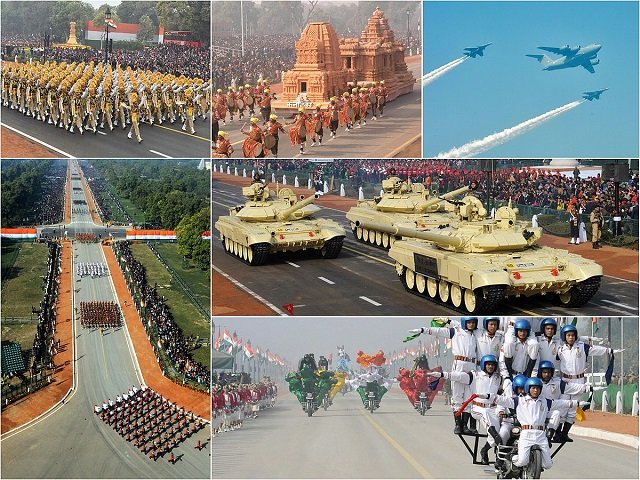India observes and commemorates Republic Day, a public holiday on January 26, 1950, when the country’s constitution went into effect. The constitution was approved by the Indian Constituent Assembly on November 26, 1949, and it came into effect on January 26, 1950. This made the Government of India Act 1935 obsolete and made India a republic separate from the British Raj[1]. Since the Indian National Congress issued the Declaration of Indian Independence on January 26, 1930, that day was chosen as Republic Day.
What is the Republic Day of India?
Republic Day is one of three national holidays in India. It celebrates the ratification of India’s constitution on January 26, 1950. India gained independence from Britain on August 15, 1947, which is celebrated as a separate national holiday. However, the colonial Government of India Act of 1935 remained largely in place for the country’s first three years.

A constituent assembly elected by provincial assemblies began drafting a constitution for the newly independent nation shortly after independence was declared. India’s constitution was completed after more than two years and established India’s independent democratic government. As a nod to the Indian National Congress’ Purna Swaraj (complete self-rule) declaration of independence in 1930, which was regarded as the first concrete step toward independence from Britain, The date of January 26 was chosen as the official enactment date.
According to its preamble, the nation was officially referred to as the Republic of India in the 1950 constitution. It was a “sovereign socialist secular democratic republic” that “secures all its citizens justice, liberty, equality, and fraternity.”
History of Republic Day
The Indian independence movement led to India’s independence from the British Raj on August 15, 1947. India gained its independence on August 15, 1947, as a constitutional monarchy led by George VI and the Earl Mountbatten as governor-general. The Indian Independence Act 1947 (10 & 11 Geo 6 c. 30) was passed by the Parliament of the United Kingdom to divide British India into two new independent Dominions of the British Commonwealth (later the Commonwealth of Nations).

However, there was no permanent constitution in place; Instead, the modified colonial Government of India Act of 1935 served as the foundation for its laws. A resolution was introduced on August 29th, 1947, with Dr. B. R. Ambedkar serving as chairman, to form a Drafting Committee to draft a permanent constitution. India’s Republic Day commemorates the implementation of its constitution, whereas India’s Independence Day marks the country’s liberation from British rule. On November 4, 1947, the committee prepared a draft constitution and presented it to the Constituent Assembly.
Prior to adopting the constitution, the Assembly held 166 public sessions over two years, 11 months, and 18 days. After much deliberation and some modifications, the 308 Assembly members signed two handwritten copies—one in Hindi and one in English—on January 24, 1950. Two days later, on January 26, 1950, the document went into effect across the entire nation. Dr. Rajendra Prasad began his first term as President of the Indian Union on that day. Under the transitional provisions of the new Constitution, the Constituent Assembly became the Parliament of India.
Dr. B R Ambedkar made the following observation regarding the advantages and disadvantages of life after January 26, 1950 in his final address to the Constituent Assembly on November 25, 1949: In 1950, on January 26, we are going to enter into a life of contradictions. Inequality will prevail in social and economic life, while equality will prevail in politics. We will recognize the principle of one man, one vote and one vote, one value in politics.
Due to our social and economic structure, we will continue to deny the concept of one man, one value in our social and economic lives. How much longer will we continue to live this contradictory life? How much longer will we deny equality in our economic and social lives? We will only be putting our political democracy at risk if we continue to deny it for an extended period of time. We must eliminate this contradiction as soon as possible, or those who suffer from inequality will destroy the Assembly, the foundation of political democracy that has been laboriously constructed.
How is Republic Day celebrated in India?
The holiday’s main event is a huge parade in New Delhi, the capital, that features military, cultural, and historical displays. The prime minister observes a moment of silence and places a wreath at the arched war memorial known as the Amar Jawan Jyoti before the parade.
Due to the fact that the majority of businesses, schools, and government offices are closed, smaller parades, cultural programs, public celebrations, and private parties take place across the nation. The Beating Retreat Ceremony, which features performances by bands representing the Indian Army, Navy, and Air Force, takes place in New Delhi on January 29 to bring the festivities to an end.

